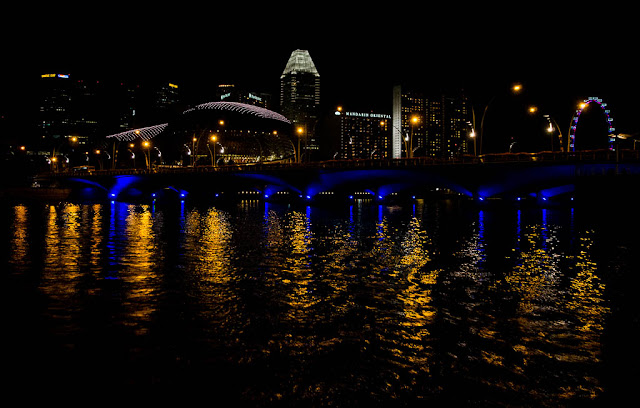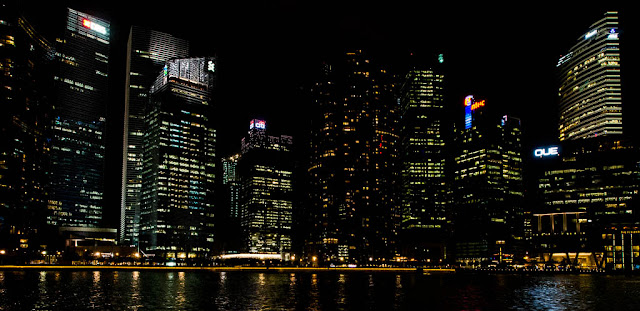Photography is not about technology, but it is a practice that has always taken advantage of the latest developments in science and engineering. The early days of photography in the 19th century were limited by and then liberated by developments in the chemistry of film and the printing process. In the 20th I would argue that film technology although changing did not make such leaps, instead the Physics of Optics made for the greatest changes, as lenses became sharper, lighter and more versatile. Now in the 21st electronics leads the way with the ability of electronic engineering to rapidly shrink the size and cost of devices whilst simultaneously improving utility and quality.
This is leading me to rethink the camera technology that I use and what I consider to be my standard kit. Although recently I have explored the use of medium format film and still see my Fujifilm GF670 as a go to camera for art driven work, I am firmly a child of the digital world. In two weeks we leave for our annual diving trip to South East Asia, 3 weeks away from the grind of work to kick back and relax, but also to turn my attention back to my original photographic love, the tropical reef ecosystem. This triggered a major rethink on the cameras I use, both underwater and above.
I have been shooting digital cameras underwater for 11 years, starting with a 2MP Canon Ixus in a tiny box, graduating to an Olympus WZ5060 bridge camera and then to a Canon EOS 20D/40D DSLR setup. Each time the amount of equipment I needed to carry grew larger and larger, and when coupled with Heidi's video rig, meant we had roughly 20Kg of camera equipment to carry on each trip. Not only are the housings heavy, but the nature of underwater photography requires backup, 3 cameras have died on me over the years. During the same period of time airlines have become increasingly fussy about the amount of checked and hand luggage that can be carried. When diving they offer an additional 10Kg on top of the 20Kg of standard luggage, which helps, but with our combined dive, photo kit, and other essentials (clothes) coming to 100Kg, our hand carry was becoming unwieldy. We routinely carried 15-20Kg of camera gear in large camera rucksacks. Not only was it painful to carry, it was also getting harder and harder to fool the check in staff. Underwater this is not such an issue, as the kit is pretty close to neutral buoyancy, but it did have its challenges in heavy current.
At the same time my 40D setup was 6 years old, one camera had already needed to be replaced, and the housing was beginning to show its age. My first consideration was to house either my 5D2 or 7D, requiring a simple replacement of the housing, but retaining the lens ports and flash guns, cheap and a definite upgrade in quality. But, not solving the weight issue. Another way to go would have been one of the new high end compact cameras, a Canon S100 or G14/G1X, but this would have been too great a step down in quality. What I needed was something with higher quality than the 40D, offering flexibility, but much smaller. The answer needed two technologies to come together. The first was the advent of affordable machined aluminium housings from a Hong Kong company called Nauticam. Up to this point I had been using Ikelite polycarbonate housings, low cost, but very heavy, existing aluminium DSLR housings were in excess of 3000 Euros without lens port. The second was the advent of mirrorless interchangeable lens cameras offering DSLR quality in a very much smaller package.
After a great deal of thought we both opted for a Panasonic GX1 micro 4/3 system, equally capable for video and still photography. Using the same cameras meant sharing lenses and most importantly having a backup system should one fail. In my case I also switched out my strobes from the heavy electronically fired Ikelite DS125s to much smaller optically fired Inon D2000s. The former are triggered by a sync cord that links from the strobe to the camera making a direct electronic contact and permitting TTL operation. This requires several connections through waterproof bulheads and is not the cheapest option, a Y cable firing two strobes costs 200 Euros and this is the one part that will certainly break so two are needed. The Inon strobes are very different, they link to the camera by a "wet" fibre optic cable and use the pulse of light from the cameras onboard flash to trigger the external strobes. Cheap and cheerful, although perhaps not so reliable.

The photo above shows the two systems assembled, the diminutive GX1 system in front of my 40D system. The smaller size means less drag underwater and almost a 50% reduction in weight from 8.5Kg to 4.5Kg in the hand. Simply carrying this from my room to the dive boat will be so much easier!
Another key advantage of the Panasonic camera is that it is operated entirely using the screen on the back as a viewfinder. Normally this would rule the camera out for me, I require the option of a proper viewfinder, EVF or optical. However, underwater, wearing a diving mask, using a camera that only offers an eyepiece is very challenging. I am unable to see the whole frame and when using the camera lose spatial awareness in the water. This and the diminutive size of the system make it far more versatile underwater. I will be able to maneuver the camera into locations that previously would be impossible.
Finally the Nauticam housing is a itself a work of art, a simple box, but one that is very elegantly engineered. All controls are accessible and visibly marked. Diving is not hard, but also not easy, there are a lot of things that must be constantly monitored such as air consumption, nitrogen loading, depth and buoyancy. Adding a camera into the mix really complicates things. Having clear labeling of buttons takes away another thing to remember.
This internal shot shows how a set of gears and buttons take the controls through the housing and onto the camera.
With the camera comes lens selection. Underwater there are two pretty much standard lens types, ultra wide angle and macro, with little in between. The nature of water and how it absorbs light means that a successful photograph is rarely taken more than 1m from the subject. A wide angle enables close approach whilst retaining the ability to view a large expanse of the reef. Wide angle lenses also generally have very short minimum focus distance coupled with high depth of field even at large apertures. So far I have bought an 8mm fisheye and a 12mm f/2.5 prime, both of which can use the same dome port on the housing. Fisheyes are excellent underwater lenses the distortion not being readily noticeable in a world where straight lines are rare and the tiny minimum focus enabling very close approach to subjects. The 14mm is a more standard wide angle good for schooling fish and wreck diving. On the macro side I have a 45mm f/2.8 Panasonic lens, equivalent to 90mm FF. Previously I used a 60mm on my 40D equal to 96mm FF so I have a pretty similar setup. The smaller imaging sensor of the GX1 will, however, provide an further boost in the effective magnification of the lens to roughly 2x.
All of this has led me to a reappraisal of what I use above water. I am a camera nerd and one with a good job that affords regular equipment purchases and upgrades, but there is a limit to what I can use. I have a comprehensive Canon DSLR setup with both FF and APS-C cameras and lenses. Alongside that I have an APS-C mirrorless Samsung system and a variety of fixed lens compacts, the jewel being being my Fuji X100. Now I have a micro 4/3 system to feed and nurture. It is becoming too much, so time to readjust my approach.
First of all I am heartily sick of DSLRs, they weigh too much and are hardly discreet. However, I have yet to find a smaller camera that can compare to my 5D2 coupled with an L series prime for image quality. On the other hand, I am finding that the micro 4/3 system is far ahead of my APS-C DSLRs, neither the 40D or even 7D can compare at high ISO. I plan to sell these cameras and the EF-S lenses that I have, 60mm, 10-22, 15-85, and 17-55. I will be sad to see the lenses go, especially the 60, it has been a constant diving companion for many years, but time to move on. I will gradually replace these with fast zooms for the micro 4/3 system, built around an Olympus EM-5 for above water work.
This will leave me with the 5D2 and medium format film camera for more considered work, the Samsung mirrorless with pancake primes for discreet street photography and the micro 4/3 for travel and scuba. Oh and a bunch of nifty little pocket cameras for when I want to take a walk but not really think about photography. Still too many, I know, I must kick this habit someday, but it could be worse, there are far more dangerous things in the world to be addicted to than cameras.

















































